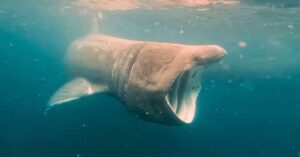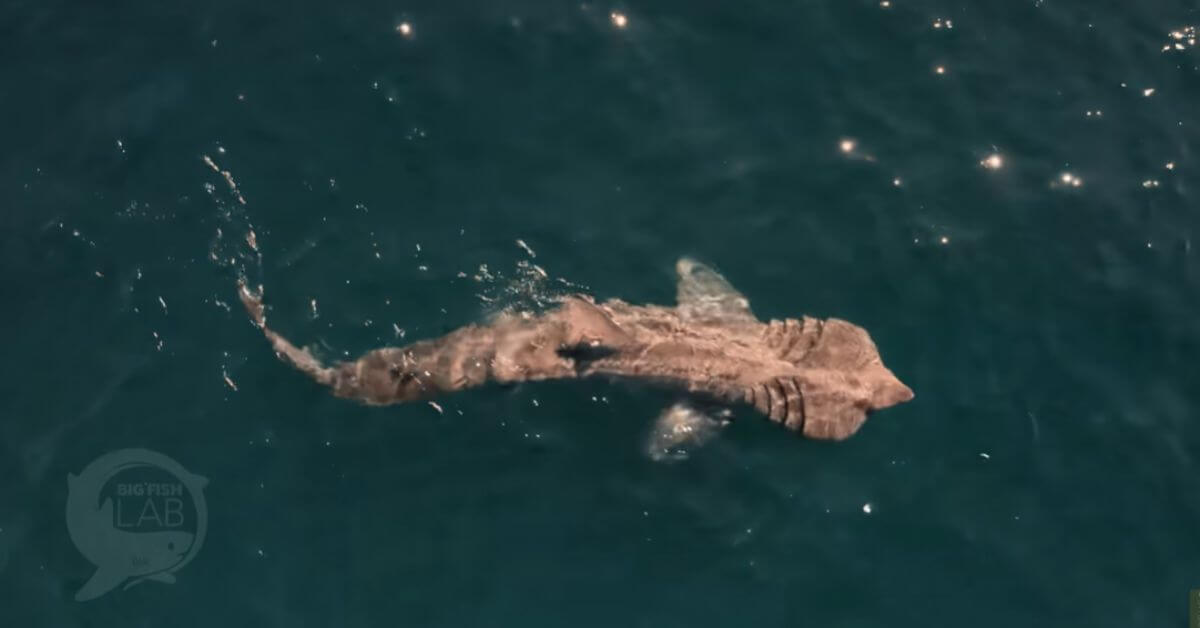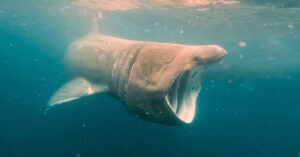Researchers Capture First-Ever Visuals Of Basking Shark, the World’s Second Largest Fish, Being Hit By A Boat

Severe Storm Breaks Apart Grounded Cargo Ship ‘Ultra Galaxy’ Off South Africa
July 30, 2024
World’s Third Most Powerful Navy Begins Major Drills Involving Most Of Its Fleet
July 30, 2024

Researchers have captured the first-ever visuals and data of a shark being struck by a boat.
The unusual incident took place off the coast of Ireland in April, shortly after an endangered basking shark was fitted with cutting-edge monitoring equipment.
The data, gathered using a gadget similar to a FitBit and a connected camera, represents a significant milestone in marine research.
A shark researcher at Oregon State University’s Hatfield Marine Science Center and the study’s lead author, Taylor Chapple, stated that the incident marks the first-ever direct observation of a ship strike on a marine megafauna.
The study, published in Frontiers in Marine Science, revealed that the female basking shark, which was around 7 meters long, was injured while feeding at the water’s surface. Following the accident, the shark moved to deeper waters, discontinuing its feeding activity.
Researchers were unable to tell if the shark recovered from the strike since its monitoring tag detached itself around seven hours later, indicating no return to normal behaviour during that time.
Video Credits: SHARK TALES/YouTube
According to the International Union for Conservation of Nature, basking sharks, the world’s second-largest fish species with lengths exceeding 8 meters, are at risk of extinction.
Their surface-feeding behaviour, which is similar to that of some whales, makes them more vulnerable to boat strikes. Unlike whales, basking sharks often sink when killed, misleading estimates of their mortality rates.
Ireland passed the Wildlife Act in 2022 to preserve basking sharks, and the Irish government built the country’s first National Marine Park this year, covering 70,000 acres around the coast of County Kerry.
The park provides essential habitat for basking sharks throughout feeding and mating seasons.
The incident occurred while researchers were conducting a study at the newly built park.
The tagged shark, which had been observed for foraging behaviour and environmental interactions, was struck by a boat shortly after being tagged.

The camera footage revealed visible skin injury, paint marks, and a red abrasion but no open wounds or blood.
Co-author Nicholas Payne, an assistant professor at Trinity College Dublin, emphasized the sharks’ sensitivity to vessel strikes and the need for additional information on how to avoid such hazards.
Co-author Alexandra McInturf, a research associate in Chapple’s Big Fish Lab and co-coordinator of the Irish Basking Shark Group, emphasized the importance of additional research on shark interactions with water users in the National Marine Park and other Irish hotspots.
The study also includes contributions from David Cade and Jeremy Goldbogen of Stanford University’s Hopkins Marine Station, as well as Nick Massett of the Irish Whale and Dolphin Group in County Kerry, Ireland.
The Hatfield Marine Science Center at Oregon State University continues to play an important role in marine and estuarine research, functioning as a laboratory, research base, and educational facility for oceanographic studies.
Reference: Oregon State University
Researchers Capture First-Ever Visuals Of Basking Shark, the World’s Second Largest Fish, Being Hit By A Boat appeared first on Marine Insight – The Maritime Industry Guide
Source: Maritime Shipping News


